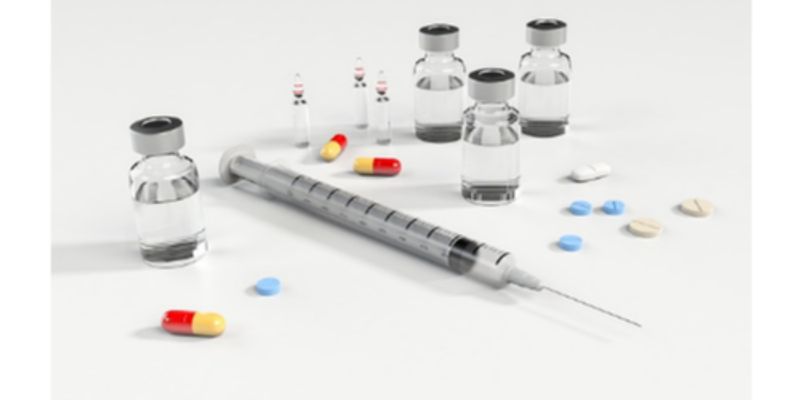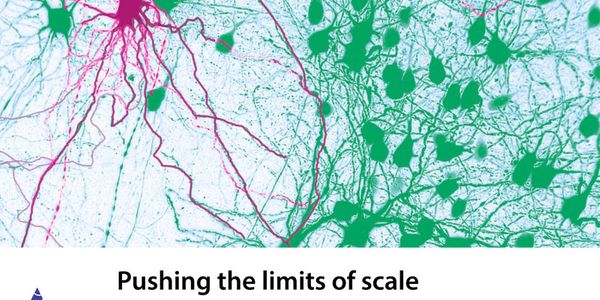Substance Abuse
Substance Abuse is an excessively habitual partaking in drugs or alcohol. The effects of substance abuse can be harmful both mentally and physically and can lead to addictive tendencies. The most commonly abused substances are alcohol and opioids, which can cause problems such as heart and liver damage.
-
MAR 23, 2022 | 11:55 PMOften overlooked but critical to most cannabis laboratory operations is sample workflow and sample preparation, having these areas figured out early in the start-up process is essential &nda...NOV 05, 2020 | 9:00 AMMore than 50,700 Americans died of opioid overdose in 2019, and more than 1.6 million Americans live with addiction to opioids. Moreover, more than 50 million Americans suffer from chronic p...Speaker: Rebecca G. Baker, PhD , Linda L. Porter, PhD , Jack B. Stein, PhDPresented at: Opioid Crisis Virtual Event Series 2020
NOV 05, 2020 | 12:00 AMSubstance use disorder (SUD) remains a highly stigmatized medical condition in the US. One of the most effective methods of treatment for SUD, specifically for opioid use disorder and alcoho...OCT 14, 2020 | 10:00 AMDATE: October 14, 2020 TIME: 10:00am PT Do you need help in planning your drug testing protocols? Did you know that a “one size fits all” approach to drug testing does not apply...JUL 09, 2020 | 11:00 AMDATE: July 9, 2020 TIME: 11:00am PT Maladaptive aggression is an immutable force that contributes to the suffering and death of millions of people around the world annually, as well as prese...MAY 06, 2020 | 12:00 AMHydroxychloroquine and chloroquine are long-standing antimalarial drugs recently brought into the spotlight as potential treatments for the pandemic-causing coronavirus (SARS-CoV-2). Notable...MAR 11, 2020 | 9:00 AMThe US Brain Research through Advancing Innovative Neurotechnologies is a research program focused on building fundamental knowledge of how brain circuits process information to enable human...JAN 01, 2020 | 6:00 AMThe dopamine D4 receptor (D4R) is enriched in the prefrontal cortex where it plays important roles in cognition, attention, decision making and executive function. Novel D4R-selective ligand...NOV 14, 2019 | 7:30 AM70,237 drug overdose deaths occurred in the United States in 2017 and opioids were involved in 47,600 of those deaths (67.8%).1 Ohio had the second highest rate of opioid overdose deaths in t...Speaker: Douglas Rohde, MS, F-ABC, MLT(ASCP)NOV 08, 2017 | 12:00 PMNovel psychoactive substances (NPS) emerged in the United States around 2000. Initially, synthetic cannabinoids and stimulants prevailed. Now, designer opioids, benzodiazepines an...Speaker: Robert Middleberg, PhDAPR 27, 2017 | 10:00 AMDATE: April 27, 2017TIME: 10:00am PT, 1:00pm ETMass spectrometry is increasingly being used for clinical testing and evaluation of patients in various settings. The utilization of...NOV 02, 2016 | 10:30 AMWith increasing emphasis on effective pain management in clinical care, there has been a significant increase in the number of opioid prescriptions in the past decade. While these drugs...Speaker: William Clarke, PhD, MBA, DABCCMAR 17, 2016 | 10:30 AMThe adolescent brain has been forged by evolution to have different features than those of a child or an adult, but it is not broken or defective. Phenomenal ability to adapt to environ...DEC 02, 2015 | 8:00 AMLive Webinar: December 2, 2015 8:00am PST In recent years, there has been a dramatic increase in the number of new designer drugs designed to mimic the effects of controlled substances. &n...Speaker: Julia Pearson, PhD, DABFTSponsored By: Thermo Fisher Scientific, Thermo Fisher ScientificOCT 01, 2015 | 8:00 AMIs your lab constantly challenged by case back log while trying to validate new methods to identify designer drugs? Your challenge is common to many forensic toxicology labs around the world....Speaker: Maciej Bromirski, MSc , Kristine Van NattaSponsored By: Thermo Fisher Scientific, Thermo Fisher ScientificMAR 19, 2015 | 3:00 PMThe NIH BRAIN initiative, informed by the report from the scientific community (BRAIN 2025) is underway. The major funded efforts at this time fit into 3 main categories; 1) defining the comp...MAR 19, 2015 | 9:00 AMImpulsivity can be defined as the tendency to act prematurely without foresight. Behavioural and neurobiological analysis of this construct, based on evidence from both animal and human studi...Speaker: Trevor Robbins, CBE FRS FMedSci FBPsSPresented at: Neuroscience Virtual Event Series 2015
OCT 30, 2014 | 10:30 AMMany drugs currently used for anti-cancer therapy demonstrate significant inter-individual variability that cannot be normalized using body weight or body surface area. There is an increasing...Speaker: William Clarke, PhD, MBA, DABCCMAY 29, 2014 | 12:00 PMPharmcogenomics (PGx) is the 2nd potential clinical application of genomic medicine, preceded by genomic application for cancer. In the recently published, 2012 Institute of Medicine report o...Speaker: Steven Wong, PhD, DABCC(TC), FACBMAY 28, 2014 | 10:30 AMGuidelines for physicians treating pain patients with chronic opioid therapy recommend the patients be monitored for the presence of their prescribed medications. In addition, it is often rec...Speaker: Amadeo J Pesce, PhD, DABCCOCT 17, 2013 | 8:00 AMMany drugs currently used for anti-cancer therapy demonstrate significant inter-individual variability that cannot be normalized using body weight or body surface area. There is an increasing...Speaker: William Clarke, PhD, MBA, DABCC
MAR 23, 2022 | 11:55 PM
Often overlooked but critical to most cannabis laboratory operations is sample workflow and sample preparation, having these areas figured out early in the start-up process is essential &nda...
NOV 05, 2020 | 9:00 AM
More than 50,700 Americans died of opioid overdose in 2019, and more than 1.6 million Americans live with addiction to opioids. Moreover, more than 50 million Americans suffer from chronic p...
Speaker:
Rebecca G. Baker, PhD
, Linda L. Porter, PhD
, Jack B. Stein, PhD
Presented at: Opioid Crisis Virtual Event Series 2020
NOV 05, 2020 | 12:00 AM
Substance use disorder (SUD) remains a highly stigmatized medical condition in the US. One of the most effective methods of treatment for SUD, specifically for opioid use disorder and alcoho...
OCT 14, 2020 | 10:00 AM
DATE: October 14, 2020 TIME: 10:00am PT Do you need help in planning your drug testing protocols? Did you know that a “one size fits all” approach to drug testing does not apply...
JUL 09, 2020 | 11:00 AM
DATE: July 9, 2020 TIME: 11:00am PT Maladaptive aggression is an immutable force that contributes to the suffering and death of millions of people around the world annually, as well as prese...
MAY 06, 2020 | 12:00 AM
Hydroxychloroquine and chloroquine are long-standing antimalarial drugs recently brought into the spotlight as potential treatments for the pandemic-causing coronavirus (SARS-CoV-2). Notable...
MAR 11, 2020 | 9:00 AM
The US Brain Research through Advancing Innovative Neurotechnologies is a research program focused on building fundamental knowledge of how brain circuits process information to enable human...
JAN 01, 2020 | 6:00 AM
The dopamine D4 receptor (D4R) is enriched in the prefrontal cortex where it plays important roles in cognition, attention, decision making and executive function. Novel D4R-selective ligand...
NOV 14, 2019 | 7:30 AM
70,237 drug overdose deaths occurred in the United States in 2017 and opioids were involved in 47,600 of those deaths (67.8%).1 Ohio had the second highest rate of opioid overdose deaths in t...
Speaker:
Douglas Rohde, MS, F-ABC, MLT(ASCP)
NOV 08, 2017 | 12:00 PM
Novel psychoactive substances (NPS) emerged in the United States around 2000. Initially, synthetic cannabinoids and stimulants prevailed. Now, designer opioids, benzodiazepines an...
Speaker:
Robert Middleberg, PhD
APR 27, 2017 | 10:00 AM
DATE: April 27, 2017TIME: 10:00am PT, 1:00pm ETMass spectrometry is increasingly being used for clinical testing and evaluation of patients in various settings. The utilization of...
NOV 02, 2016 | 10:30 AM
With increasing emphasis on effective pain management in clinical care, there has been a significant increase in the number of opioid prescriptions in the past decade. While these drugs...
Speaker:
William Clarke, PhD, MBA, DABCC
MAR 17, 2016 | 10:30 AM
The adolescent brain has been forged by evolution to have different features than those of a child or an adult, but it is not broken or defective. Phenomenal ability to adapt to environ...
DEC 02, 2015 | 8:00 AM
Live Webinar: December 2, 2015 8:00am PST
In recent years, there has been a dramatic increase in the number of new designer drugs designed to mimic the effects of controlled substances. &n...
Speaker:
Julia Pearson, PhD, DABFT
Sponsored By: Thermo Fisher Scientific,
Thermo Fisher Scientific
OCT 01, 2015 | 8:00 AM
Is your lab constantly challenged by case back log while trying to validate new methods to identify designer drugs? Your challenge is common to many forensic toxicology labs around the world....
Speaker:
Maciej Bromirski, MSc
, Kristine Van Natta
Sponsored By: Thermo Fisher Scientific,
Thermo Fisher Scientific
MAR 19, 2015 | 3:00 PM
The NIH BRAIN initiative, informed by the report from the scientific community (BRAIN 2025) is underway. The major funded efforts at this time fit into 3 main categories; 1) defining the comp...
MAR 19, 2015 | 9:00 AM
Impulsivity can be defined as the tendency to act prematurely without foresight. Behavioural and neurobiological analysis of this construct, based on evidence from both animal and human studi...
Speaker:
Trevor Robbins, CBE FRS FMedSci FBPsS
Presented at: Neuroscience Virtual Event Series 2015
OCT 30, 2014 | 10:30 AM
Many drugs currently used for anti-cancer therapy demonstrate significant inter-individual variability that cannot be normalized using body weight or body surface area. There is an increasing...
Speaker:
William Clarke, PhD, MBA, DABCC
MAY 29, 2014 | 12:00 PM
Pharmcogenomics (PGx) is the 2nd potential clinical application of genomic medicine, preceded by genomic application for cancer. In the recently published, 2012 Institute of Medicine report o...
Speaker:
Steven Wong, PhD, DABCC(TC), FACB
MAY 28, 2014 | 10:30 AM
Guidelines for physicians treating pain patients with chronic opioid therapy recommend the patients be monitored for the presence of their prescribed medications. In addition, it is often rec...
Speaker:
Amadeo J Pesce, PhD, DABCC
OCT 17, 2013 | 8:00 AM
Many drugs currently used for anti-cancer therapy demonstrate significant inter-individual variability that cannot be normalized using body weight or body surface area. There is an increasing...
Speaker:
William Clarke, PhD, MBA, DABCC



















